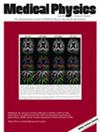Photon mini-GRID therapy for preoperative breast cancer tumor treatment: A treatment plan study
Abstract
Background
Breast cancer is the leading cause of female cancer mortality worldwide, accounting for 1 in 6 cancer deaths. Surgery, radiation, and systemic therapy are the three pillars of breast cancer treatment, with several strategies developed to combine them. The association of preoperative radiotherapy with immunotherapy may improve breast cancer tumor control by exploiting the tumor radio-induced immune priming. However, this requires the use of hypofractionated radiotherapy (3 × 8 Gy), increasing the risk of toxicity. Mini-GRID therapy (mini-GRT) is an innovative form of spatially fractionated radiation therapy (SFRT) characterized by narrow beam widths between 1 to 2 mm that promises a significant increase in normal tissue dose tolerances and could thereby represent a new alternative for preoperative breast cancer treatment. Mini-GRT has been successfully implemented at the Hospital de Santiago de Compostela (Spain) with a flattening filter-free LINAC (megavoltage x-rays).
Purpose
In this dosimetry proof-of-concept study, we evaluate the feasibility of photon mini-GRT for preoperative breast cancer treatment. We also assess the clinical potential of mini-GRT and compare it with the current treatment standard of intensity-modulated radiotherapy (IMRT).
Methods
Seven unbiased breast cancer dosimetries of patients treated with stereotactic body radiotherapy (SBRT) (3 × 8 Gy, IMRT) were selected for the study. Photon mini-GRT was compared with SBRT using three main criteria: (i) the dose to organs at risk (OARs), (ii) the dose constraints dictated by normal tissue tolerance, and (iii) the lateral penumbra in OARs. Tumor coverage was evaluated in terms of normalized total dose at 8 Gy-fractions. The optimized SBRT by IMRT was realized at the Institut Curie, Paris, France. The dose in mini-GRT was calculated by means of Monte Carlo simulations based on the mini-GRT implementation realized at the University Hospital in Santiago de Compostela.
Results
Compared to SBRT plans, mini-GRT resulted in a reduction of the mean dose to the lungs, heart, chest wall, and lymph nodes in the studied cases by a factor ranging from 50% to 100%. Additionally, valley, mean, and peak doses to normal tissues meet the dose tolerance limits for the considered OARs, the most challenging of all being the skin. The mean dose to the skin was reduced (20%–60% less) for most of the studied cases. Mini-GRT also yielded sharper lateral penumbras in the skin and lungs (size reduced by at least 50%). Similar tumor integral doses were obtained for the two treatment modalities.
Conclusion
Mini-GRT with megavoltage x-rays is an innovative treatment approach already implemented in a clinical context. In this proof-of-concept study, we evaluated mini-GRT for partial breast cancer irradiation, demonstrating its potential for preoperative treatment thanks to the high skin and normal tissue-sparing capabilities. These initial results represent a first step towards clinical use and encourage further prospective clinical studies.


 求助内容:
求助内容: 应助结果提醒方式:
应助结果提醒方式:


